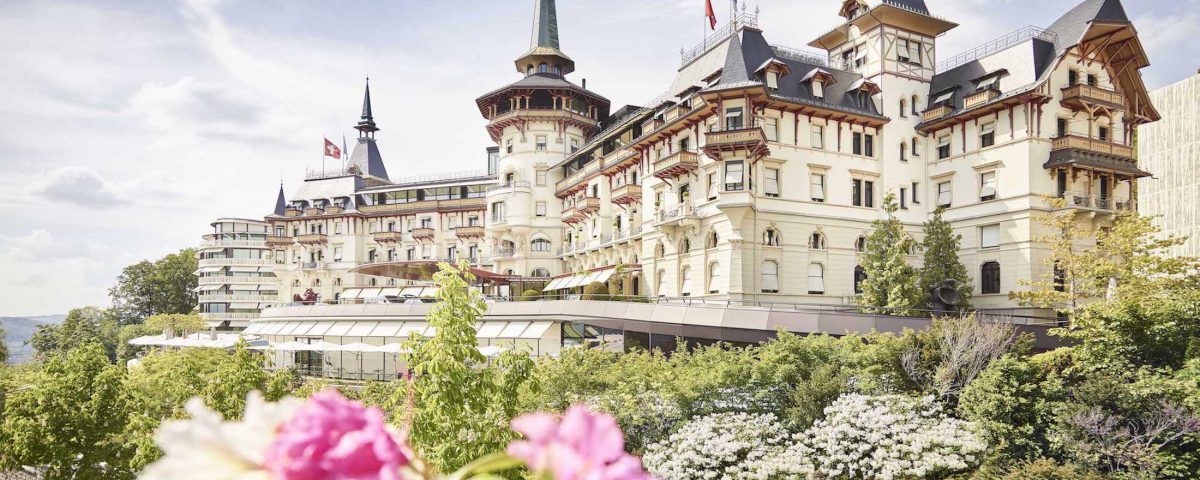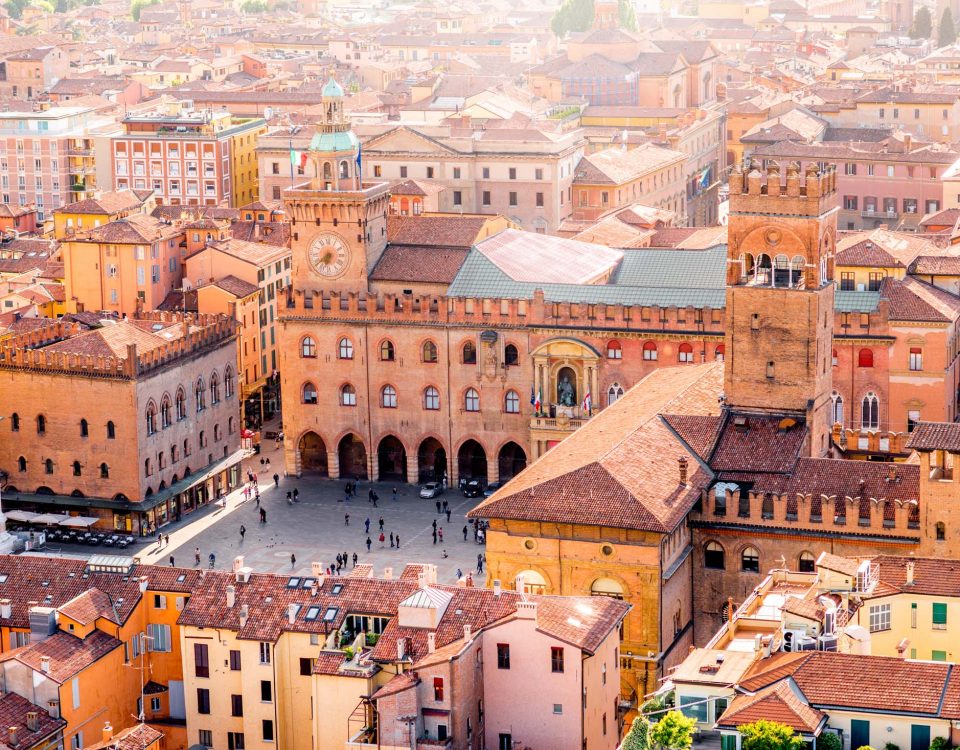
Highlighting Havana – Cuban Cigars, Rum, and Music
December 22, 2019
Underwater Restaurants of the World
January 6, 202010 Hotels Designed by Famous Architects
Hotels designed by renowned architects capture the spirit of local culture as well as the ambiance of destination in which they stand. Architects are responsible for designing some of the world’s most iconic homes, restaurants, and skylines from the sensational bulbous domes and shimmering gemstones of the Taj Mahal in India to the swooping sails of the Sydney Opera House.
Architectural design has shaped the world’s most visited cities and the hidden destinations. These famous architects have utilized modern design, cultural aesthetic, unique ideas and a connection to local heritage to create masterful artwork in the form of fabulous luxury accommodations. We have chosen the top 10 hotels designed by famous architects from around the world showcasing innovation amid distinctive backdrops to which other opulent designs aspire.
1. The Dolder Grand – Zurich, Switzerland
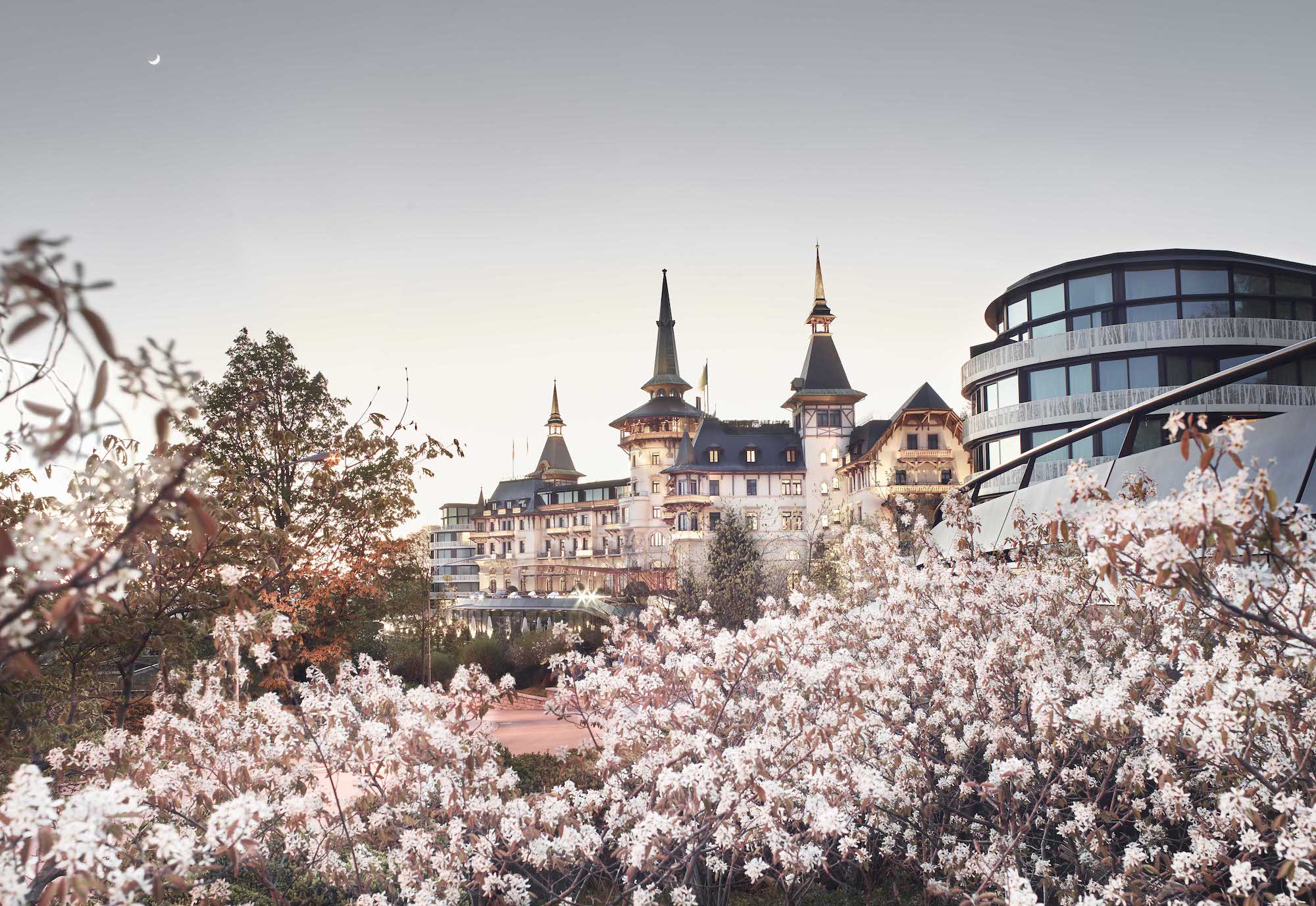
German-born architect Jacques Gros designed the Dolder Grand at the end of the 19th century. The stunning ornate towers and marble pillars resemble a fairytale castle. The detailed interior creates an opulent ambiance with each room decorated with original artwork and lambent candles dangling from the ceiling capturing the romantic vintage style. The hotel has two restaurants, a bar, and 173 rooms juxtaposing the antique beauty of the original design with contemporary comforts and a state of the art spa overlooking the flickering lights of Zurich at the edge of the Adlisberg forest.
2. Hotel Unique – São Paulo, Brazil
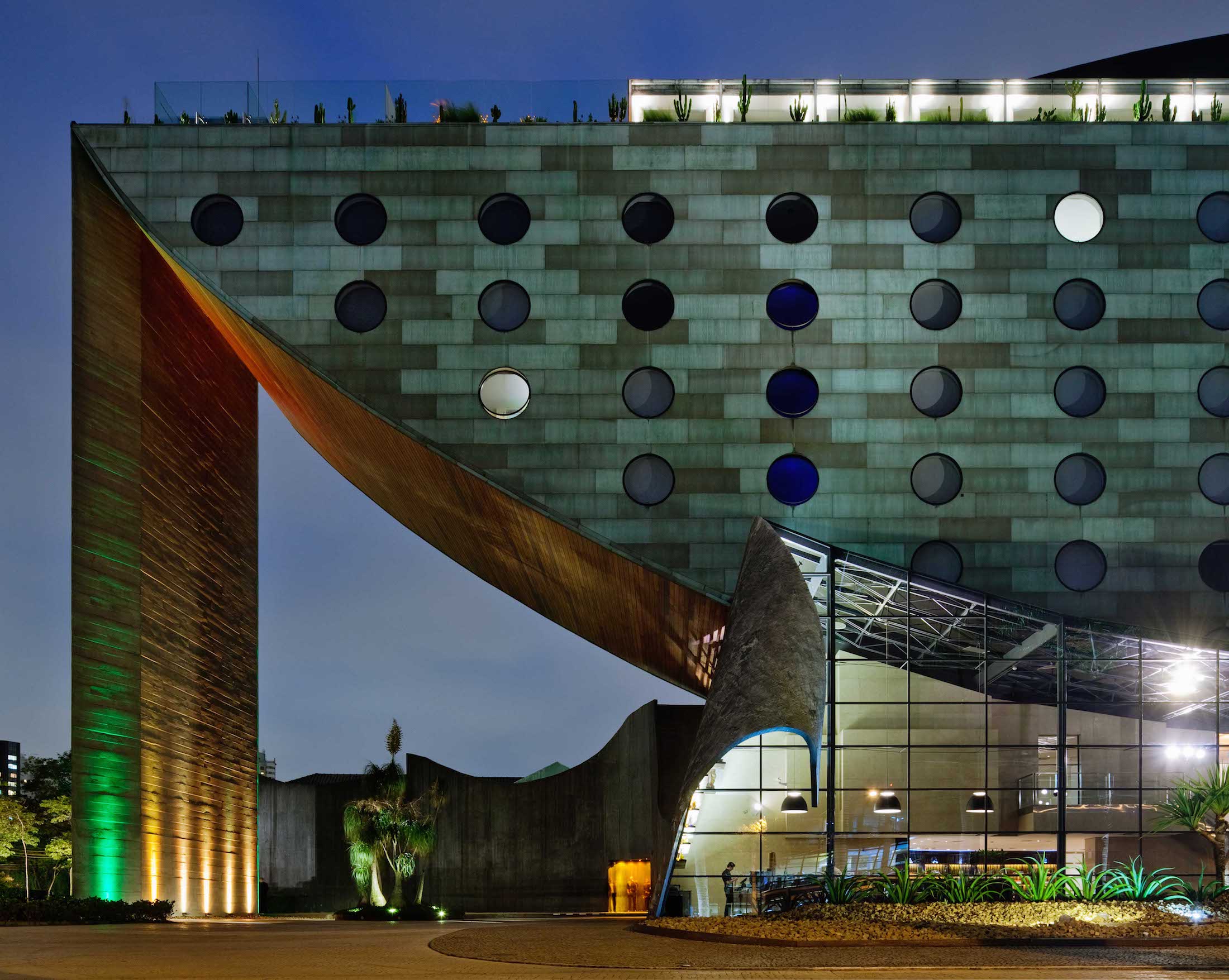
Brazilian architect Ruy Ohtake, son of a famous Japanese-Brazilian abstractionist artist, incorporates Brazilian, Japanese, and European styles into a mixture of modern and brutalist framework. Hotel Unique was built within the confines of the surrounding neighborhood without obstructing the pre-existing skyline. The design resembles a teetering, beached boat with 95 rooms and a restaurant situated on the upper terrace. Large circular windows provide a panoramic view of São Paulo’s Jardins region. The visually striking style has become a part of the vibrant city by providing an ever-changing landscape for art, culture, design, fashion, music, and gastronomy with exquisite personalized service
3. The Naka Phuket – Phuket, Thailand
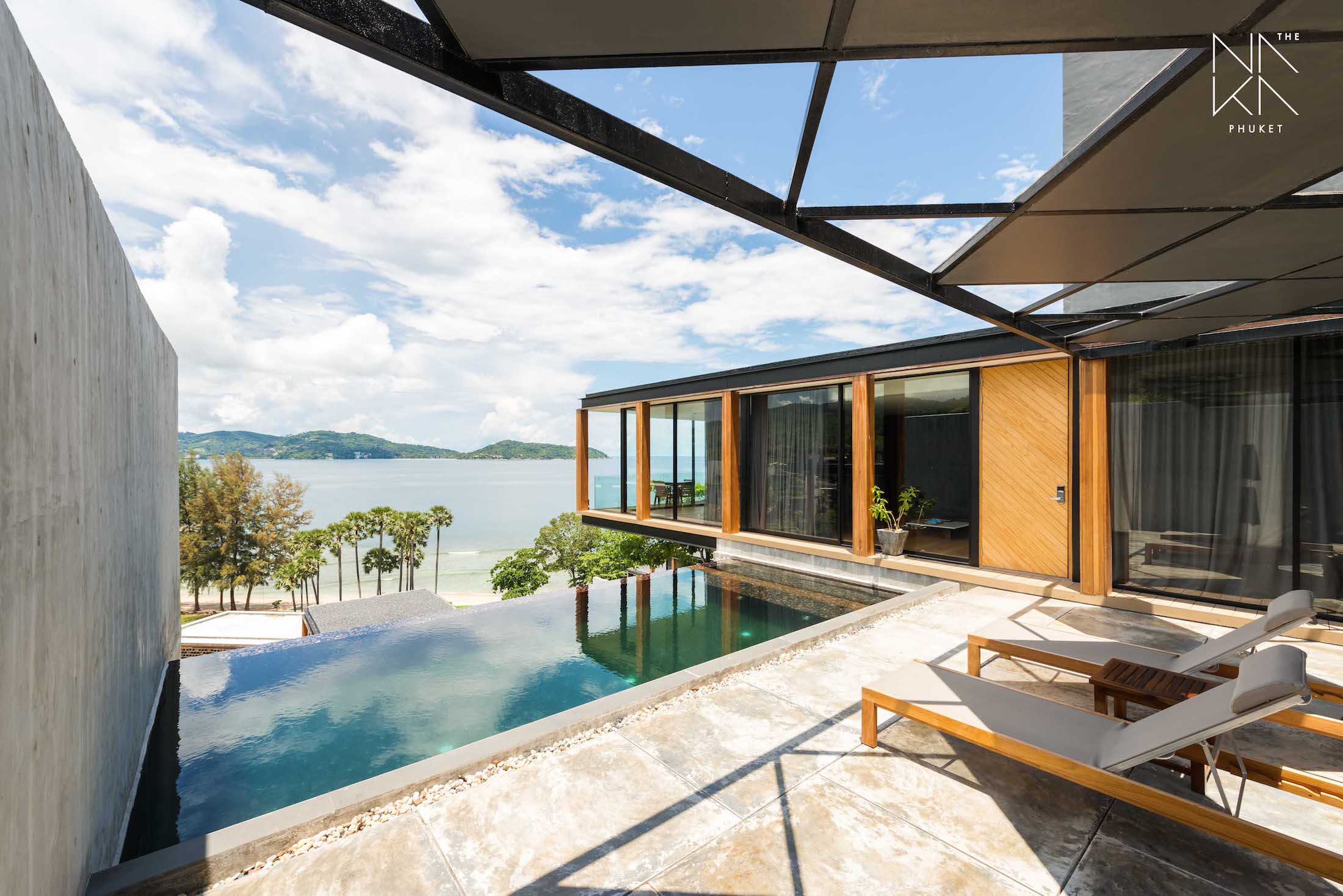
Thailand’s star architect Duangrit Bunnag has a recognizable aesthetic promoting strong and simple lines creating a sense of continuity between outdoor and indoor spaces. His hotel design at Naka Phuket on the Thai island of Phuket nestles into the ancient valley at the western edge of the tropical landscape overlooking the glistening turquoise waters of the Andaman Sea. 94 glass-built villas provide spectacular private panoramas connecting the watery horizon to the jade canopy of the island jungle. You have the secluded ambiance of a romantic getaway or adventurous escapade steeped in modern luxury blending into the surrounding nature.
4. Hotel Marqués de Riscal – Elciego, Spain
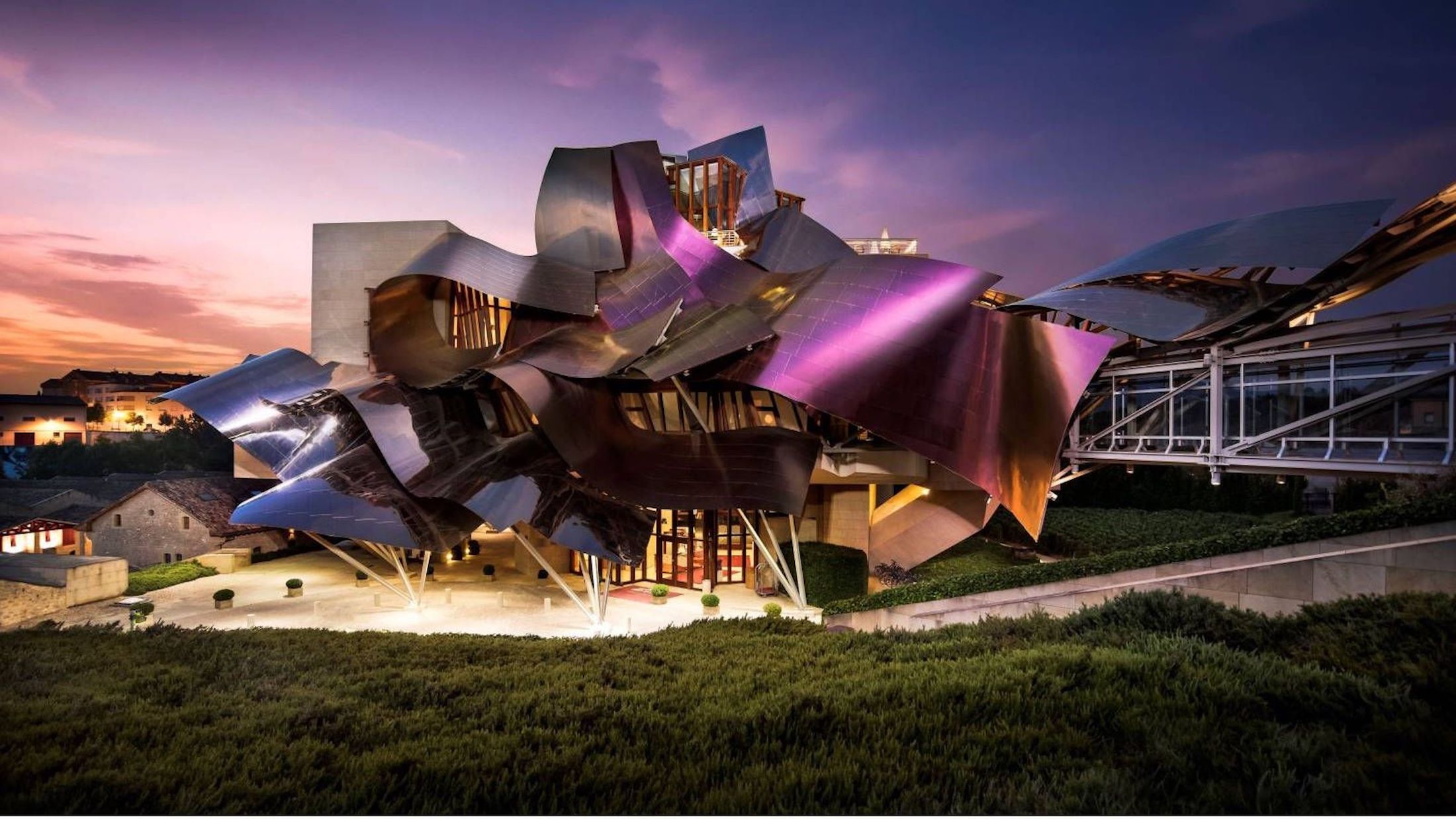
Canadian-born American architect Frank Gehry—who also designed the Guggenheim Museum in Bilbao, Spain and the Walt Disney Concert Hall in Los Angeles, California—fashioned the sensational Hotel Marqués de Riscal in Spain’s Rioja district rising out of the jade vineyards like a mound of billowing ribbons. The medieval walls of Elciego texture the rows of vines sweeping across the hills contrasting the modernist steel and titanium hotel exterior. The attention to specific detail shines in the façade’s reflective surface leading to the curved maple wood walls, marble bathrooms, and opulent leather furniture decorating the interior. The design highlights architecture as art in the luxurious retreat boasting local gastronomy heightened by contemporary techniques and the unmistakable impression of a Gehry design from the tilted walls, zigzagging windows, and high ceilings resembling cathedrals.
5. Burj Al Arab – Dubai, United Arab Emirates
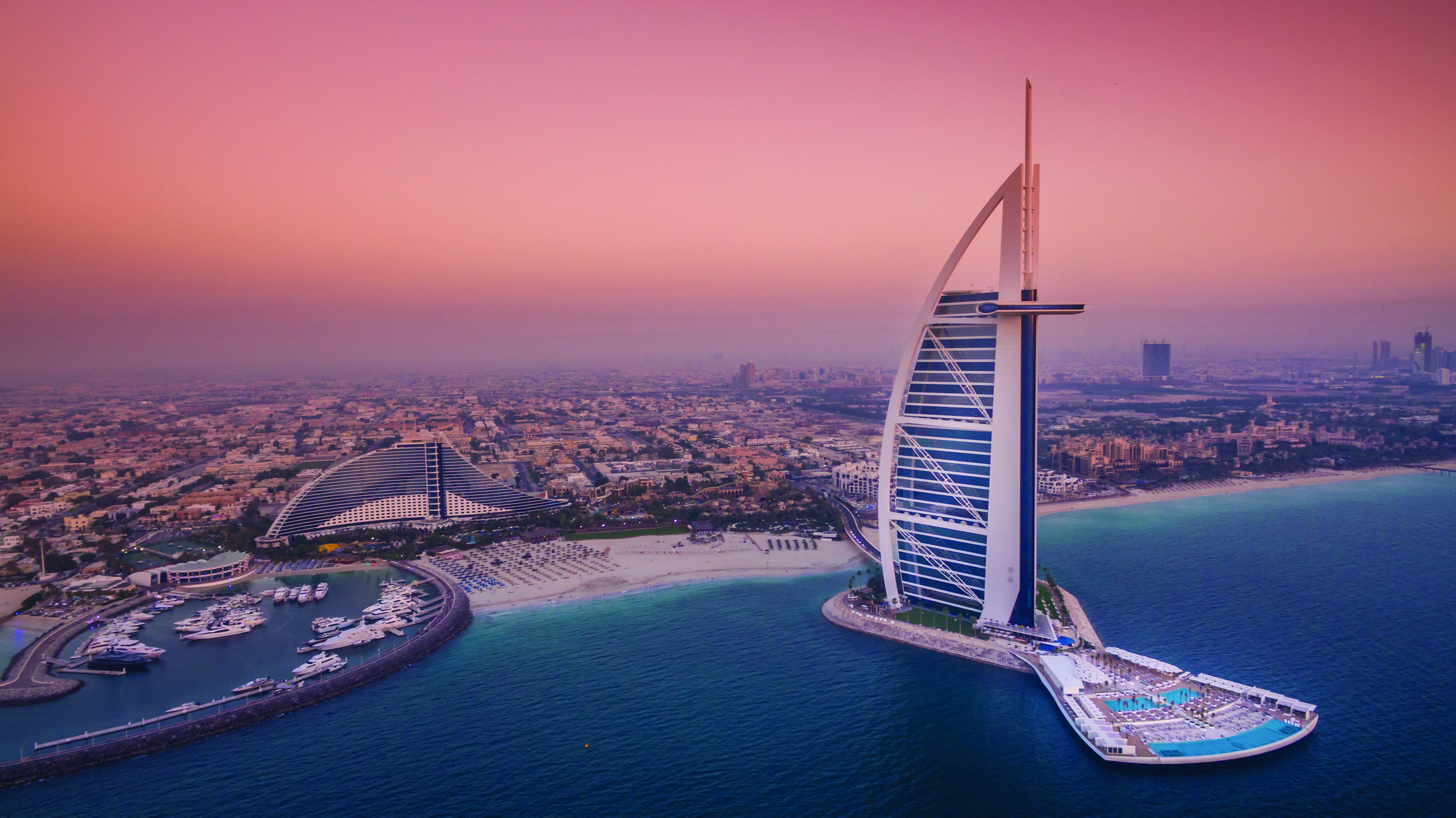
British architect Tom Wright designed the worlds’ third-tallest hotel on a man-made island connected to mainland Dubai by a private curving causeway. Burj Al Arab incorporates decadence and opulence regarding itself as the world’s most luxurious hotel. The design embodies a billowing sail with an exterior steeped in simplicity. However, the interior represents exuberance with an atrium flanked by golden columns paved with 30 types of marble. The outdoor terrace has a sleek ambiance reaching the lapping water edging the private island near two infinity pools blending into the horizon. Moroccan-style mosaics decorate the spa surrounding the plunge pools while the suites have Hermés amenities and a private butler.
6. NH Torino Lingotto – Turin, Italy
The Italian architect Renzo Piano designed the ultimate hotel for fans of automobiles and architectural style in the avant-garde space inside the converted shell of the former Fiat factory. The design pays homage to the industrial-chic ideals of the 1960s while showcasing the voluminous space with abundant glass divided by Meccano pillars. Vibrant orange and green hues burst from the walls amid sporadic car designs. Whitewashed wooden floors and a soothing color palette offer a romantic ambiance in each room amid exterior views to the snowcapped Alps or interior garden views of the rustling palm trees. The rooftop jogging path was used as the Fiat testing track in the 2003 film The Italian Job with Mark Wahlberg and Charlize Theron.
7. Park Hyatt Tokyo – Tokyo, Japan
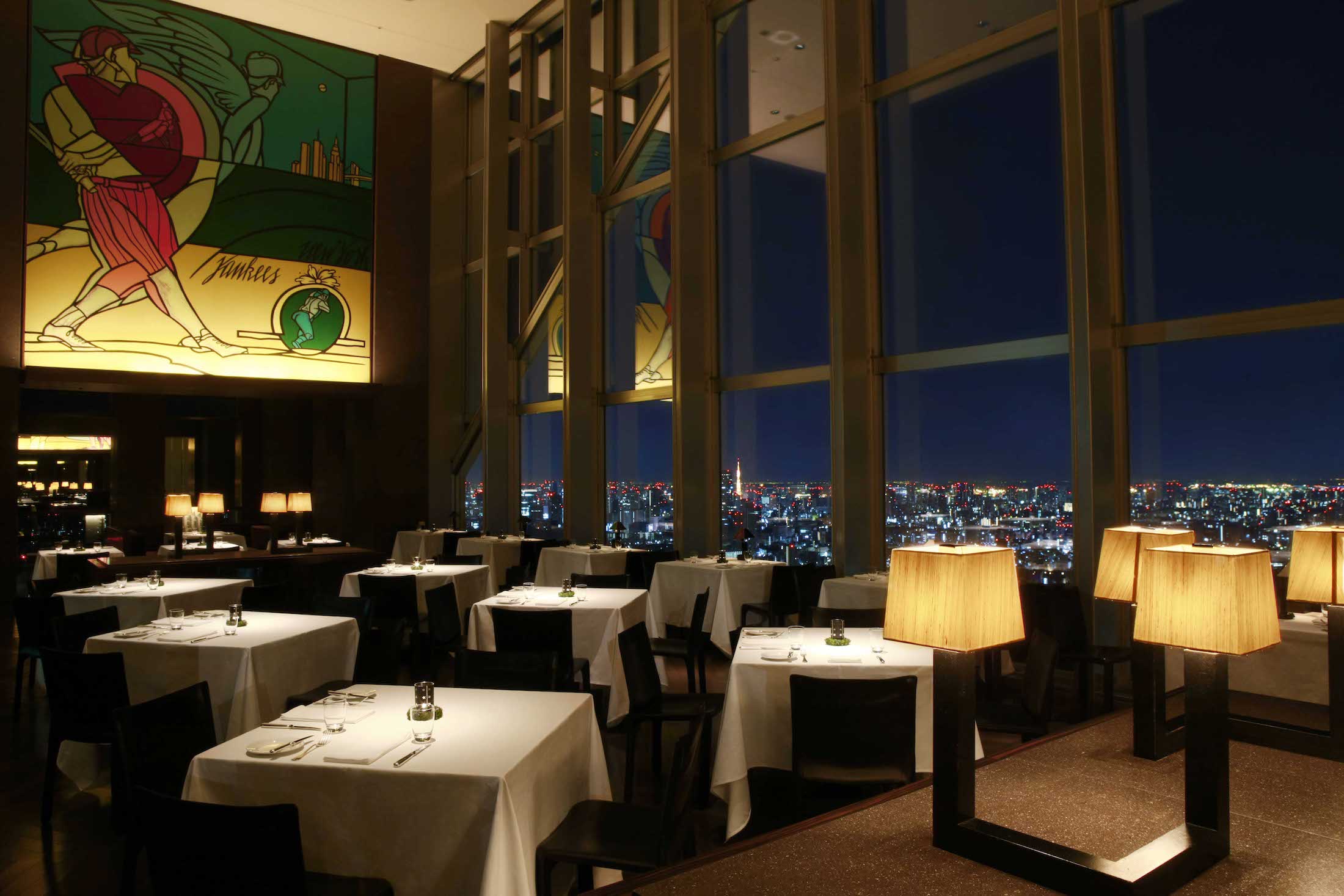
Japanese architect Kenzo Lange designed one of Tokyo’s best-loved hotels celebrated for its commitment to personalized service, elegant design, and outstanding views of Mount Fuji. The rooms feature modern luxuries and timeless design with efficient, quality services including the expansive urban spa located on the 45th-floor offering rejuvenating massages and aromatic oils. The restaurant on the 52nd floor has spectacular 360-degree views of the active city and was featured as the setting in Sofia Coppola’s Oscar-winning film Lost in Translation. The opulent comforts allow you to sink into a peaceful oasis in the heart energetic Tokyo.
8. Life Marina – Ibiza, Spain
French architect, Jean Nouvel crafted the Life Marina hotel as if from a dream by avoiding the clichéd visual designs of apartment blocks and instead relying on a horseshoe frame with descending volume resembling an amphitheater. The halls, rooms, and corridors act like art galleries accentuating the views to the historic harbor and Old Town. The two outdoor pools let you bask in the Iberian sunlight, and the pristine spa offers rejuvenating treatments including a refreshing eye treatment using diamond dust. The rooms are decorated with original artwork while facing either the shimmering pools or the harbor.
9. Andaz Peninsula Papagayo Resort – Guanacaste Province, Costa Rica
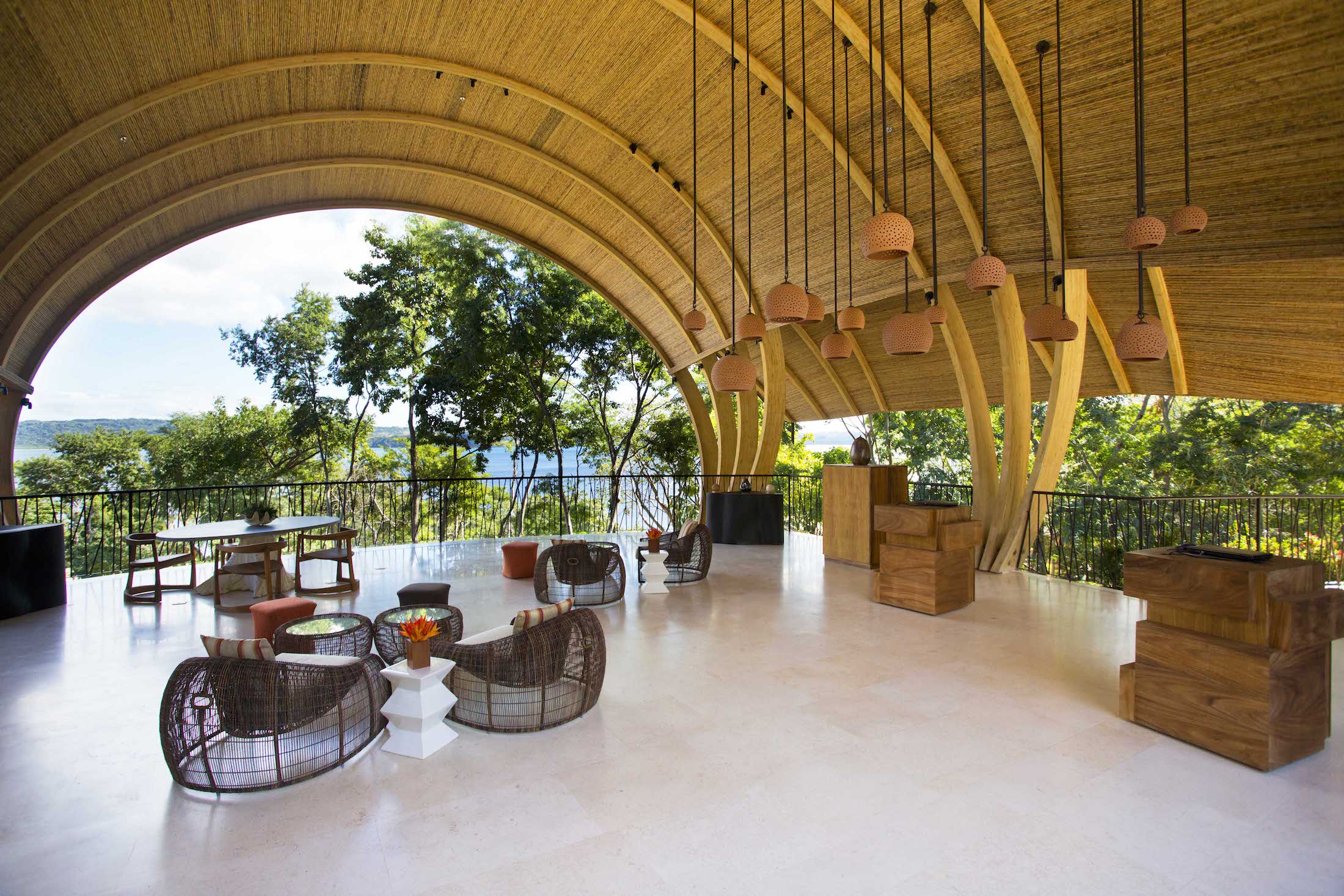
The internationally recognized architect and resident of Costa Rica, Ronald Zürcher, designed the opulent and chic seaside retreat focusing on personalized service, elegant spa treatments, and an emphasis on local culture overlooking the Papagayo Peninsula on the Pacific Ocean. The buildings resemble shells and cocoons further accentuating nature’s grandeur while burrowing between the Jicaro trees allowing the infinity pools to melt into the horizon. Local artists have ornamented the walls with sophisticated driftwood handicrafts. The secluded spa ensures relaxing treatments and two small beaches materialize at low tide for swimming or snorkeling excursions. Floor-to-ceiling windows provide ample light and the perfect private space from which you can view the surrounding forest, the beauty of Culebra Bay, and unparalleled sunsets.
10. Villa San Michele – Florence, Italy
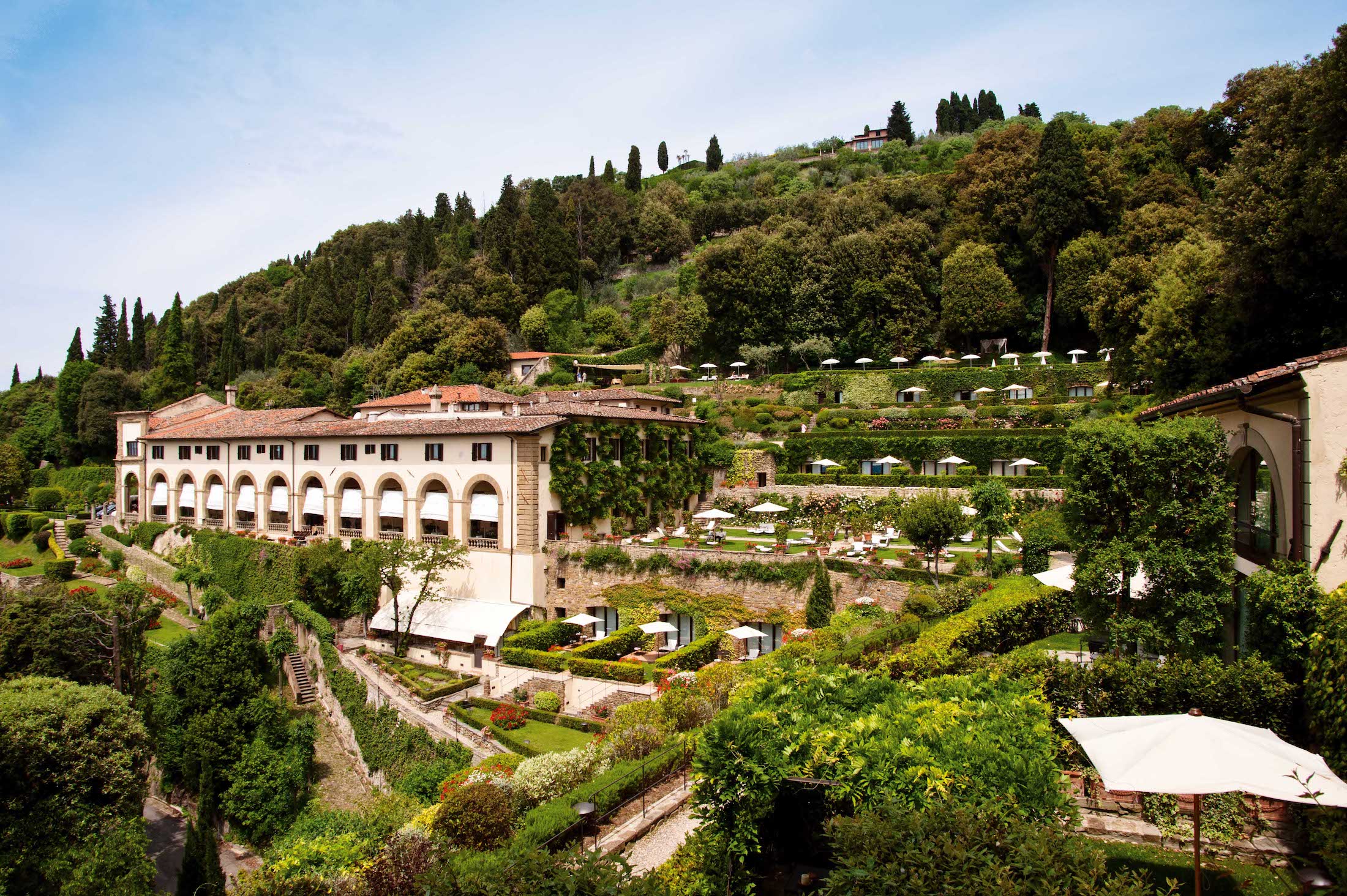
The Renaissance meets modern luxury at Villa San Michele, a 14th-century monastery embodying the romance of Florence with a façade attributed to the famous Italian architect, Michelangelo. The hotel hugs the lush Tuscan hillside for an inspiring view of the cathedral towers and iconic dome shaping the Florentine skyline while providing a serene escape from the bustling ambiance of the Renaissance city. Private gardens and elegant terraces accentuate the charms of the cypress trees, colorful flowers, and rolling hills bordering the cityscape. Vaulted ceilings and antique furniture bring the opulence of the past to life amid Michelangelo’s porticoed façade, meandering corridors, wide arches, and worn terracotta floors.


